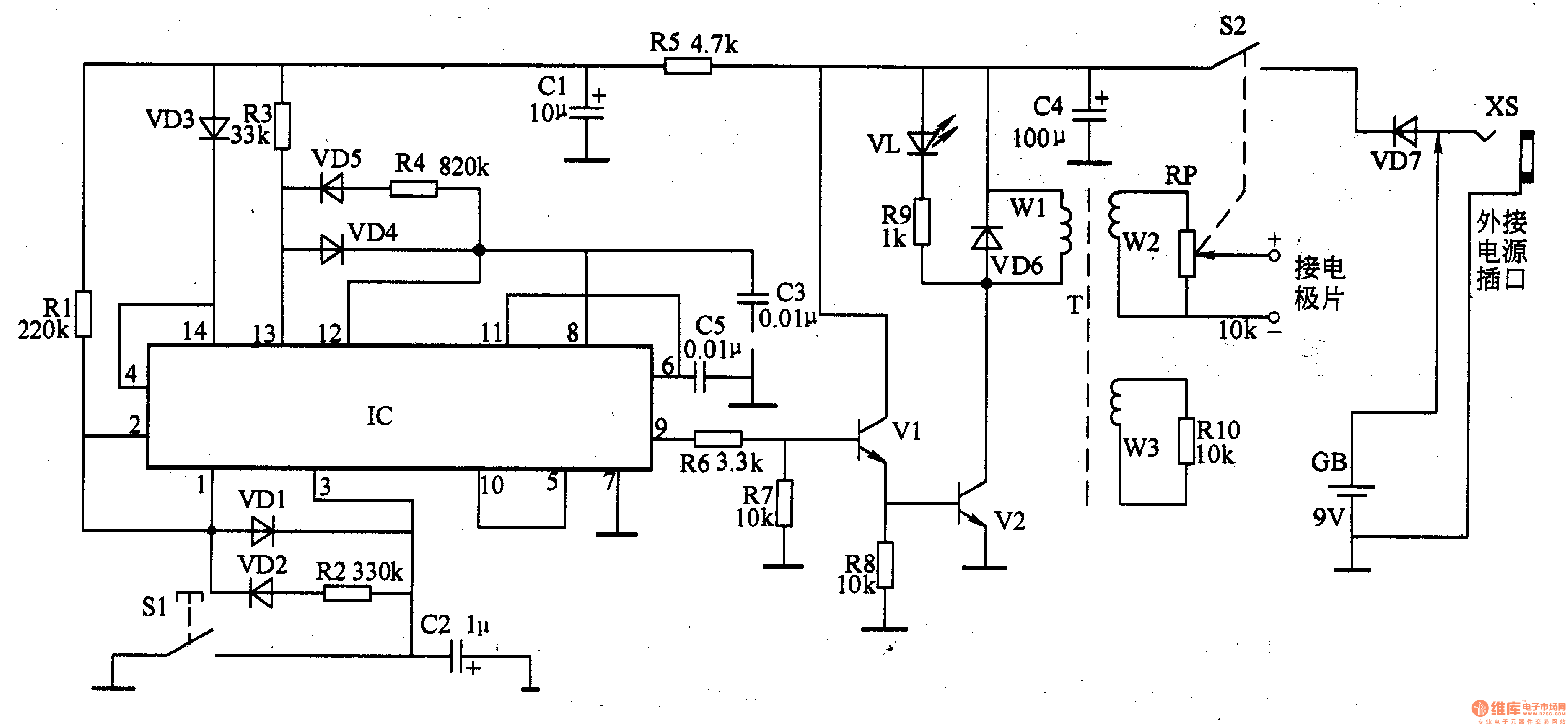![]()
Brand AVX TPSE226M035R0125 Low impedance tantalum capacitor AVX 22
![]()
Electronic scale crystal oscillator 3.2*2.5mm 3225 16M (16.000MHZ) 12PF 10PPM 20PPM 30PPM
![]()
One-piece inductor
This example introduces an electronic analgesic circuit made of 556 dual time base integrated circuits, which can be used for adjuvant treatment of maternal delivery pain relief and intractable headache.
Circuit Operation Principle The electronic painkiller circuit consists of a pulse generator, a control circuit, and a booster circuit, as shown in Figure 9-31.
 Disposable Vape, Electronic Cigarettes, vape
Disposable Vape, Electronic Cigarettes, vape
The pulse generator (including the 2Hz pulse oscillating circuit and the 2OOHz pulse oscillating circuit) is composed of a dual time base integrated circuit IC and related peripheral components, wherein the resistors R1, R2, the capacitor C2, the diodes VD1, VD2 and the circuit inside the IC1 constitute 2 Hz. The low frequency pulse oscillating circuit; the resistors R3, R4, capacitor C3, diodes VD4, VD5 and IC1 constitute a 200 Hz pulse oscillating circuit.
The control circuit consists of a switch S1 and a capacitor C2, which functions to control the output waveform of the pulse generator (output from pin 9 of ICl).
When S1 is turned on, the capacitor CZ is short-circuited to the ground, and the pulse generator outputs a continuous pulse wave; when S1 is turned off, the pulse generator outputs a pulse wave of the rest (2 times/s).
The boosting circuit is composed of an amplifying tube V1, an output tube V2, a pulse transformer T1, and a potentiometer RP1. The pulse signal outputted by the 9-pin of ICl is amplified by Vl and V2, and an electrical pulse is generated on the secondary boosting winding W2 of the pulse transformer T, and the electrical pulse is transmitted to the patient through two conductive rubber pads to stimulate the skin. The layer of nerves causes the brain to spontaneously produce anti-pain hormones, which effectively eliminate or reduce pain.
Adjust the resistance of the potentiometer RP to control the amplitude of the output electrical pulse.
The light-emitting diode VL and the resistor R9 constitute a working indicating circuit, and when the analgesic circuit works normally, the VL flashes.
Component selection
Rl-R4, R6-R9 select 1/4W carbon membrane resistor for use; R5 selects 1/2W or lW carbon membrane resistor for use; RlO selects 1/2W carbon membrane resistor for use.
The RP uses a small-sized switch potentiometer for semiconductor radios, such as the WH-l5 series of synthetic carbon film potentiometers.
Both Cl and C2 use aluminum electrolytic capacitors with a withstand voltage of 5 OV or higher; C4 uses aluminum electrolytic capacitors with a withstand voltage of l6V or higher, and C3 and C5 select polyester capacitors or monolithic capacitors.
VDl-VD5 selects lN4148 silicon switching diode for use; VD6 and VD7 select 1N4007 silicon rectifier diode for use.
VL uses φ3mm red or green LEDs.
Vl can use transistors with dissipated power of 30OmW, maximum operating current of 100mA, reverse breakdown voltage of 45V, operating frequency of 15OMHz, such as 3DGl30B, 3DGl2D, BC183L, etc.; V2 selects dissipated power of 40W, maximum operating current It is a 3A transistor with a reverse breakdown voltage of 60V and an operating frequency of 3MHz, such as 3DA72B and TIWlA.
IC selects NE556 or TS556, G556 dual time base integrated circuit.
S1 uses a small self-locking button or a toggle switch.
GB uses a 9V stack battery.

 Disposable Vape, Electronic Cigarettes, vape
Disposable Vape, Electronic Cigarettes, vape
